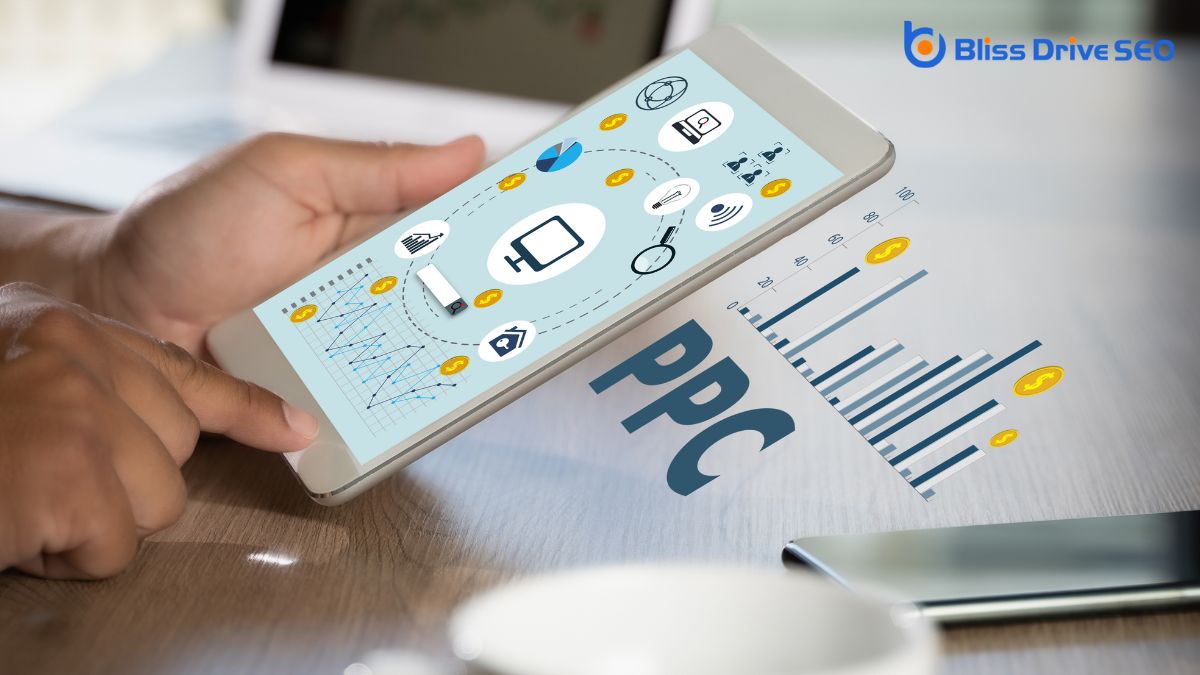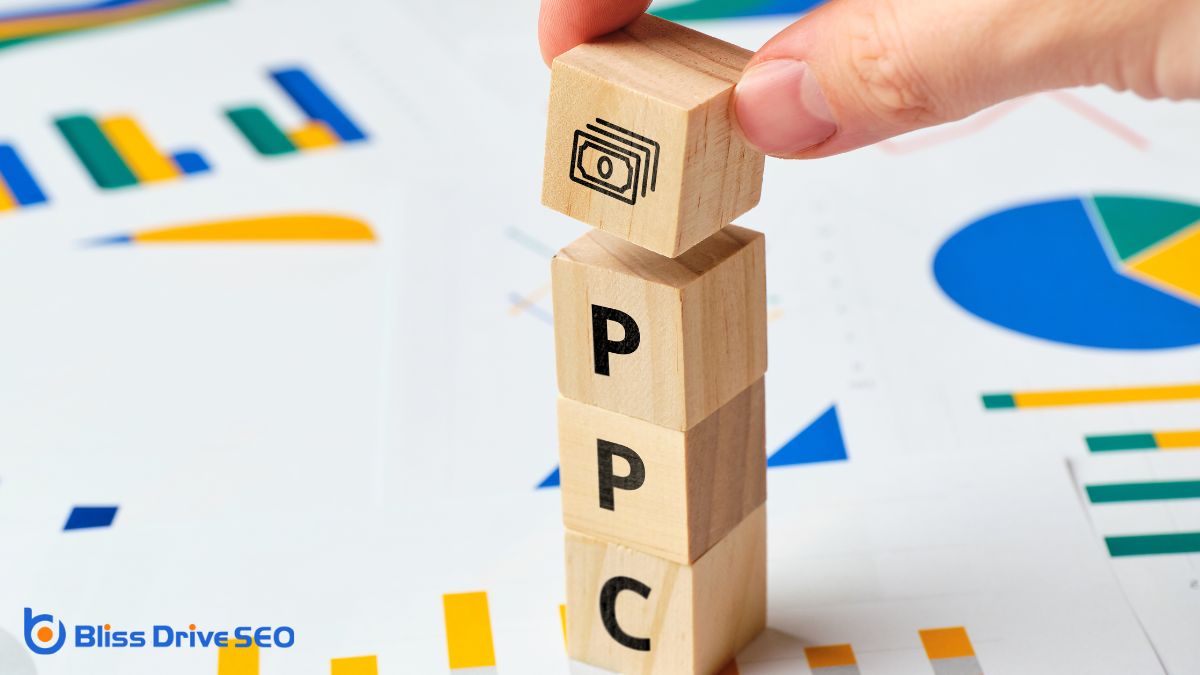Digital Marketing Services
Learn More About Us

Starting pay-per-click (PPC)An online advertising model where advertisers pay a fee each time their ad is clicked. begins with setting clear, SMART goals—boosting traffic or sales, perhaps. Choose suitable platforms and budget smartly for cost-effective campaigns. Conduct thorough keyword researchThe process of finding and analyzing search terms that people enter into search engines. to match audience intent. Craft engaging ad copyThe text or content of an advertisement. with a strong call-to-action and design conversion-focused landing pages. Monitor performance, adjusting keywordsWords or phrases that users type into search engines to find information. and bids for better ROI. By following these steps, you'll optimize your PPC strategy, with more insights just around the corner.
Setting clear campaign goals is vital for any successful pay-per-click (PPC) strategy. Without them, you risk wasting time and money on ineffective ads.
Begin by identifying what you want to achieve. Are you aiming for increased website traffic, more sales, or improved brand awarenessThe extent to which consumers are familiar with the qualities or image of a particular brand.? Once you've pinpointed your objectives, confirm they're SMART: Specific, Measurable, Achievable, Relevant, and Time-bound. This approach helps you track progress and adjust as needed.
Next, align your goals with your overall business strategy. Consider how PPC campaigns can support broader marketing efforts.
For instance, if launching a new product, prioritize goals like generating leads or driving sales. Staying focused guarantees your ad spendThe total amount of money spent on advertising campaigns. delivers real results, maximizing return on investment.

When choosing the right PPC platforms, consider your campaign goals and how each platform aligns with them.
Evaluate your budget to guarantee the platform's cost structure fits within your financial plan.
Look at the audience targeting options each platform offers to effectively reach your desired customers.
Choosing the right PPC platform is essential, as it directly impacts your advertising success.
To begin, consider where your target audience spends most of their time online. If they're on social media, platforms like FacebookA social networking site where users can post comments, share photographs, and links to news or othe... or InstagramA photo and video-sharing social networking service owned by Facebook. might be ideal. For business-oriented campaigns, LinkedInA professional networking site used for career and business networking. could be more effective.
Next, evaluate the platform's reach and user demographics to guarantee alignment with your audience profile.
Don't forget to assess the platform's features—some offerThe specific product or service being promoted by affiliates. advanced targeting options or better analytics toolsSoftware used to track and analyze website performance, user behavior, and marketing efforts..
You'll also want to compare ease of use; a complex interface can slow down your campaign launch.
Finally, review any case studiesIn-depth analyses of specific instances or examples to highlight success stories or lessons learned.... or testimonials about the platform's effectiveness.
After examining which PPC platform aligns best with your target audience, it's important to address budget considerations. Start by determining how much you're willing to spend daily or monthly. Remember, PPC requires constant monitoring, so set a realistic amount that won't strain your finances.
Next, consider the cost-per-click (CPC) for your chosen keywords. Competitive keywords might be pricier, impacting your budget. Don't shy away from testing different budgets to find what works best.
Additionally, leverage each platform's tools to optimize spending. For instance, Google Ads offers a daily budget feature that caps spending, preventing overspending.
Also, keep an eye on your return on investment (ROI)A measure of the profitability of an investment, calculated by dividing the net profit by the cost o... to guarantee your PPC efforts are profitable. Balancing budget and results will drive your campaign's success.
Selecting the right PPC platform for your audience is essential, and various targeting options can enhance your campaign's effectiveness. You'll want to understand each platform's strengths to reach your desired audience. Different platforms offer unique targeting features, so consider where your audience spends most of their time online. Here's a quick overview to help guide your decisions:
| Platform | Targeting Options |
|---|---|
| Google Ads | Keywords, location, device |
| Facebook Ads | Demographics, interests, behaviors |
| LinkedIn Ads | Job title, industry, company size |
| TwitterA microblogging and social networking service where users post and interact with messages known as "... Ads | Keywords, followers, interests |
| Instagram Ads | Interests, behaviors, demographics |
Analyze these options to align them with your campaign goals. By choosing the right platform and utilizing its targeting capabilities, you'll effectively connect with the right audience and improve your PPC outcomes.
To get the most out of your PPC campaigns, start by identifying target keywords that resonate with your audience.
Analyze your competitors' keywords to uncover potential gaps and opportunities in your strategy.
Utilize keyword tools to refine your list and guarantee you're selecting the most effective terms for your ads.
Why is keyword research essential for a successful pay-per-click campaign? It helps you reach your audience effectively by identifying the words they're using when searching.
Without the right keywords, your ads might miss potential customers. Here's how you can find those target keywords:
After identifying target keywords, another effective strategy for a successful pay-per-click campaign is to analyze competitor keywords. By doing this, you'll uncover what keywords your competitors are bidding on and how they're positioning themselves in the market.
Start by identifying your main competitors. Visit their websites and observe their content. Look for repeated terms and phrases that could be their primary focus. Additionally, examine their ad copy to spot keywords they prioritize.
This approach helps you understand the competitive landscape and find gaps or opportunities you might've missed. By understanding where your competitors invest their resources, you can refine your strategy, ensuring you don't waste money on ineffective keywords.
This analysis gives you a competitive edge in your PPC efforts.
Effective keyword research is the backbone of any successful pay-per-click campaign. To start, you need to utilize keyword tools effectively. These tools help you identify the right keywords that will drive traffic to your site.
Here's how you can use them:
Establishing and managing your budget is an essential step in launching a successful pay-per-click campaign. First, decide how much you're willing to spend daily or monthly. This determines the scale of your campaign and helps prevent overspending.
Next, assess your cost-per-click (CPC) based on your industry and competition. Higher CPCs typically demand more budget, so plan accordingly.
Allocate funds towards ads that align with your goals, whether brand awareness or direct sales. Monitor your spending regularly to identify high-performing keywords and adjust your budget as needed.
When crafting compelling ad copy, capturing your audience's attention quickly is essential. Your ad needs to stand out in a sea of competitors.
Start by knowing your audience's desires and pain points. Use language that resonates with them and offers a clear solution.
Here's how you can make your ad copy irresistible:
A well-designed landing page is essential for turning clicks into conversions. It's the first thing your visitors see after clicking your ad, so make it count.
Start by guaranteeing a clear, compelling headline that matches your ad's promise. This consistency builds trust. Keep your layout clean and uncluttered, guiding users effortlessly to your call-to-action (CTA). Use contrasting colors for your CTA button to make it stand out.
Include concise, persuasive content that highlights benefits and addresses potential concerns. Trust signalsElements that build trust with visitors, such as security badges, testimonials, and privacy policies... like customer reviews or guarantees can boost credibility.
Guarantee fast loading times and mobile responsiveness to avoid losing visitors. Finally, limit distractions by removing unnecessary links or navigation. A focused, user-friendly experience increases the likelihood of converting clicks into valuable actions.

Once your pay-per-click campaign is live, it's crucial to continuously monitor and enhance it for the best results.
Start by analyzing the data to identify trends and areas for improvement. Focus on these key steps:
With consistent monitoring, you'll refine your campaigns for ideal results.
You've got the tools to kickstart your pay-per-click journey. Start by defining clear campaign goals and choose the right PPC platforms to meet your needs. Immerse yourself in keyword research and set a manageable budget. Craft compelling ad copy and design landing pages that convert. Remember, monitoring and optimizing your campaigns is key to success. With these steps, you're on your way to creating effective PPC campaigns that drive results. Now, go make it happen!
